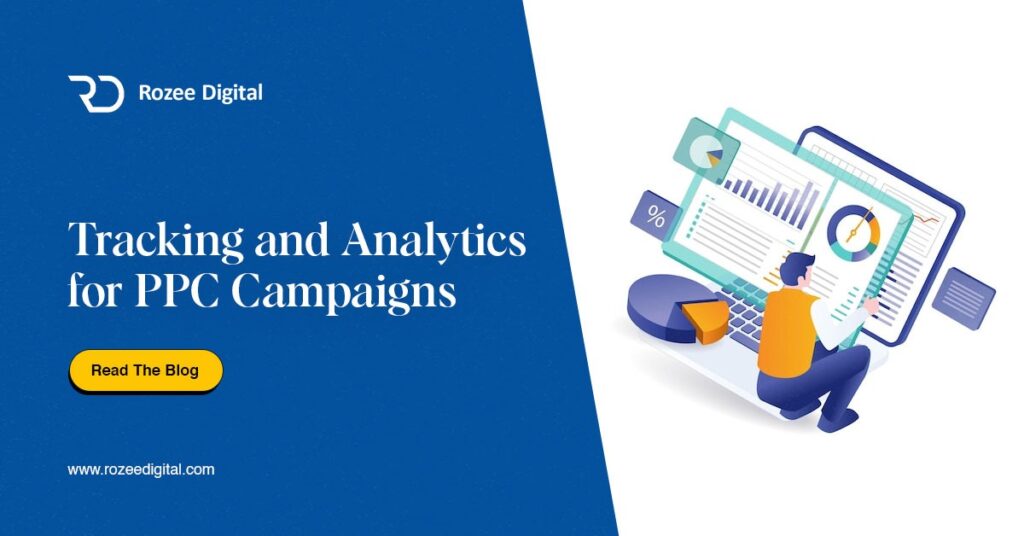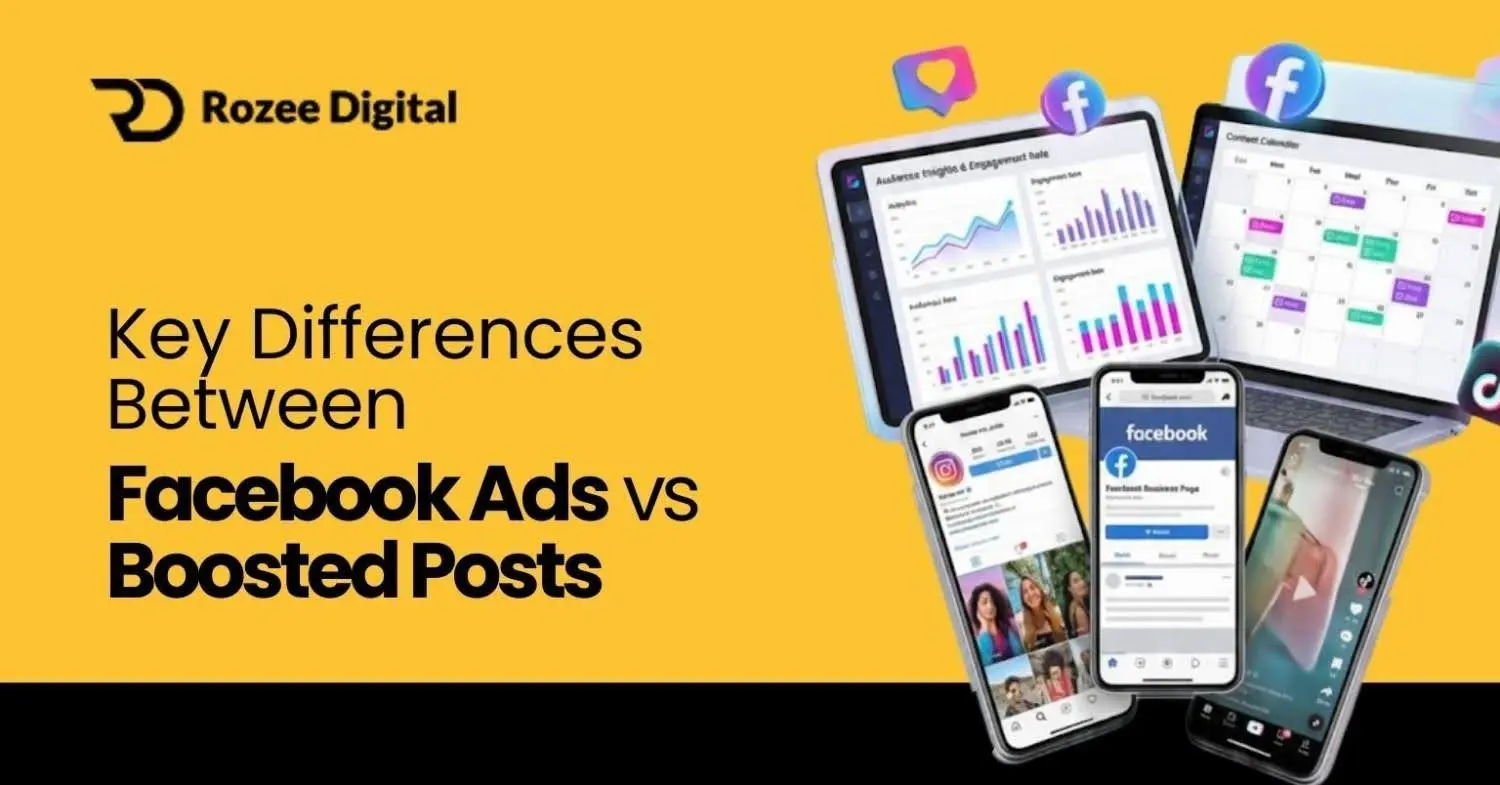As you have realized from our previous PPC-related articles, PPC is complicated. Its complexity lies in the multitude of components to manage, each capable of exerting a substantial influence on campaign expenses and overall effectiveness.
Basically running a pay-per-click (PPC) advertising campaign unfolds as a systematic journey and optimizing your PPC campaigns requires diligent PPC monitoring and effective tracking. It begins with selecting keywords, followed by bidding on them, and configuring ad and targeting parameters. Additionally, managing keyword performance is paramount, including the need to track PPC keywords to ensure their effectiveness. However, the journey doesn’t finish there. In reality, you need to spend enough time tracking some specific PPC metrics. These metrics will give you insights on how to make your marketing efforts better.
For PPC marketers striving to attain tangible outcomes and showcase robust ROI, adept pay per click tracking and analytics emerge as indispensable. Learning the basics and monitoring the right metrics provides comprehensive insights into campaign efficacy, empowering continual optimizations and optimal achievement of business KPIs.
In this blog post, we aim to furnish you with a comprehensive understanding of PPC tracking and analytics for beginners, and How to Track and Measure PPC Campaigns.
Before moving forward Unlock deeper insights with “Advanced PPC Bid Management: Strategies for Optimal Campaign Performance” learn tactics that boost results instantly!
Understanding PPC Tracking and Analytics
PPC tracking and analytics refer to the process of monitoring and analysing the performance of PPC advertising campaigns across various digital platforms. PPC tracking involves monitoring and analysing various metrics associated with your advertising campaigns across different platforms such as Google Ads, Bing Ads, and social media platforms like Facebook and LinkedIn. PPC advertising allows businesses to bid on keywords and display ads to their target audience, paying only when a user clicks on their ad. By utilizing PPC trackers and analytics tools, you can easily monitor your PPC campaigns.
Analytics, on the other hand, delves deeper into these metrics to uncover patterns, trends, and actionable insights that can inform strategic decisions. However, tracking and analytics are vital in assessing the effectiveness of these campaigns and optimizing them for better results. From PPC brand monitoring to tracking keywords, and cost pay-per-click monitoring to analysing campaign metrics and analytics, every aspect plays a crucial role.
Key Metrics to Track
1. Click-Through Rate (CTR)
Click-through rate (CTR) is a top key metric used for PPC tracking. It measures the percentage of users who click on your ad after seeing it. It’s calculated by dividing the number of clicks your ad receives by the number of times it’s shown (impressions), then multiplying by 100 to get a percentage.
A high CTR indicates that your ad is resonating well with your target audience. It reflects the relevance and effectiveness of your ad copy, keywords, and targeting. A low CTR may suggest that your ad is not compelling enough or that it’s being displayed to an irrelevant audience.
How to Improve: To improve CTR, focus on creating compelling ad copy, relevant keywords, and targeted ad groups. Use ad extensions to provide additional information and incentives for users to click on your ad. Continuously test different variations of ad copy and targeting to identify what resonates best with your audience.
2. Conversion Rate
Conversion Rate tracks the percentage of users who take a desired action, such as making a purchase, filling out a form, or signing up for a newsletter, after clicking on your ad. It’s calculated by dividing the number of conversions by the number of clicks, then multiplying by 100 to get a percentage.
Conversion Rate directly measures the effectiveness of your PPC campaign metrics in driving desired actions. A high conversion rate indicates that your ads are not only driving traffic but also persuading users to take the next step in the conversion process. It’s a critical metric for assessing the overall success and ROI of your campaigns.
How to Improve: To improve your conversion rate, ensure that your landing pages are highly relevant to your ad content and provide a clear and compelling call-to-action (CTA). Optimize your landing page design for user experience and make it easy for users to complete the desired action. Test different landing page elements, such as headlines, visuals, and CTAs, to identify what resonates best with your audience.
3. Cost-per-click (CPC)
Cost-per-click (CPC) is another key metric to monitor PPC campaigns effectively and measures the average cost you pay for each click on your ad. It’s calculated by dividing the total cost of your clicks by the number of clicks received.
CPC directly impacts your advertising budget and ROI. Monitoring CPC helps you optimize your bidding strategy to maximize ROI while staying within your budget constraints. A lower CPC allows you to acquire more clicks and potentially more conversions for the same budget.
How to Improve: To lower CPC, focus on improving your Quality Score, which is influenced by factors such as ad relevance, expected click-through rate, and landing page experience. Use targeted keywords and ad groups to improve ad relevance and click-through rates. Continuously monitor and refine your bidding strategy to achieve the best possible CPC for your campaigns.
4. Quality Score
Quality Score is a metric used by platforms like Google Ads to evaluate the relevance and quality of your ads and landing pages. It’s measured on a scale from 1 to 10, with 10 being the highest quality.
Quality Score directly impacts ad placement, CPC, and ad rank. A higher Quality Score can lead to lower CPCs, better ad placements, and increased visibility. It’s a key factor in determining the overall effectiveness and efficiency of your PPC campaigns.
How to Improve: To improve your Quality Score, focus on creating highly relevant ad campaigns with targeted keywords and compelling ad copy. Ensure that your landing pages provide a seamless and relevant user experience. Optimize your ad groups and keywords for relevancy and performance. Continuously monitor and optimize your campaigns to maintain a high-quality Score over time.
5. Return on Ad Spend (ROAS)
Return on Ad Spend (ROAS) calculates the revenue generated for every dollar spent on advertising. It’s calculated by dividing the revenue generated from ads by the total cost of advertising, then multiplying by 100 to get a percentage.
ROAS measures the profitability of your PPC campaigns and helps you evaluate the effectiveness of your advertising investment. A high ROAS indicates that your campaigns are generating positive returns, while a low ROAS may suggest inefficiencies or underperformance.
How to Improve: To improve ROAS, focus on optimizing your campaigns for conversions and revenue generation. Identify high-performing keywords, ad groups, and campaigns that contribute most to your bottom line. Allocate your budget towards these top-performing areas and continuously monitor and optimize your campaigns to maximize returns.
Master PPC campaign tracking and analytics. Learn to monitor key metrics and optimize your ad spend for better results. Click to boost your campaigns!
The Importance of Tracking and Analytics
1. Optimizing Campaign Performance
Tracking and analytics allow you to identify underperforming campaigns, and ad groups, or track PPC keywords quickly. By analysing PPC campaign metrics such as CTR, conversion rate, and Quality Score, you can refine your targeting, ad copy, and bidding strategy to improve performance and maximize ROI.
2. Understanding User Behaviour
PPC analytics provide insights into user behaviour throughout the customer journey, from the initial click on your ad to the final conversion. By tracking metrics such as bounce rate, time on site, and path to conversion, you can gain a deeper understanding of your audience’s preferences, pain points, and buying intent.
3. Budget Allocation
Effective tracking and analytics enable you to allocate your budget more efficiently by identifying high-performing channels, campaigns, and keywords. By reallocating funds from underperforming areas to those delivering the highest ROI, you can optimize your budget and drive better results.
4. Continuous Improvement
PPC advertising is not a set-it-and-forget-it strategy. It requires ongoing monitoring, testing, and optimization to stay ahead of the competition and adapt to changing market dynamics. Tracking and analytics provide the data-driven insights needed to continuously refine your campaigns and stay on top of your game.
Implementing Tracking and Analytics Tools
Several tools and platforms are available to help you track and analyse your PPC campaign metrics effectively:
- Google Analytics: Google Analytics is a powerful tool for tracking website traffic, user behaviour, and conversions. By linking your Google Ads account to Google Analytics, you can gain deeper insights into the performance of your PPC campaigns and track key metrics seamlessly.
- Google Tag Manager: Google Tag Manager simplifies the process of deploying and managing tracking tags on your website. It allows you to implement tracking codes for various platforms, such as Google Ads and Facebook Ads, without needing to edit your website’s code manually.
- Third-Party Analytics Platforms: In addition to Google Analytics, several third-party analytics platforms offer advanced tracking and reporting capabilities tailored to PPC advertising. Platforms like Adobe Analytics, Kiss metrics, and Mix panel provide deeper insights and advanced features for analysing campaign performance and user behaviour.
Want stronger ROI? Dive into “Google Ads Metrics That Matter: How to Measure Success?” and track the KPIs PPC experts rely on.
Best Practices for PPC Tracking and Analytics – PPC Campaigns
![]()
1. Set Clear Goals and KPIs
Before launching your PPC campaigns, define clear goals and key performance indicators (KPIs) to measure success. Whether your objective is to drive sales, generate leads, or increase brand awareness, align your tracking and analytics efforts with your overarching business objectives.
2. Implement Conversion Tracking
Conversion tracking is essential for measuring the effectiveness of your PPC campaigns and optimizing for conversions. Set up conversion tracking pixels or tags to track valuable actions taken by users, such as purchases, form submissions, or sign-ups.
3. Regularly Monitor and Analyse Metrics
Make it a habit to regularly monitor and analyse key metrics across your PPC campaigns. Set up custom reports and dashboards to track performance trends over time and identify areas for improvement.
4. A/B Test Ad Variations
Experiment with different ad copy, creatives, and landing pages through A/B testing to identify what resonates best with your target audience. Use tracking and analytics to measure the impact of these variations on key metrics and optimize accordingly.
Enhance campaign tracking with “A/B Testing in DTC Advertising: Best Practices and Tools” optimize your ads scientifically.
5. Stay Updated with Platform Changes
PPC advertising platforms like Google Ads and Facebook Ads frequently introduce new features and updates that can impact campaign performance. Stay informed about platform changes and adapt your tracking and analytics strategy accordingly to stay ahead of the curve.
Conclusion
Tracking and analytics are indispensable components of a successful PPC advertising strategy. By leveraging data-driven insights to monitor performance, understand user behaviour, and optimize campaigns, businesses can maximize their returns on investment and drive sustainable growth. With comprehensive PPC monitoring and PPC analytics, you can make informed decisions to maximize results and achieve your advertising goals. By implementing best practices and leveraging the right tools, marketers can unlock the full potential of PPC advertising and achieve their business objectives effectively.
Unlock higher ROI with expert PPC monitoring and analytics, get tailored insights that drive performance. Call +447887880993 or contact Rozee Digital today to optimise your campaigns.
FAQ’s
What is the importance of tracking and analytics in PPC campaigns?
Tracking and analytics are crucial for understanding the performance of PPC campaigns, identifying areas for improvement, and optimizing campaigns for better results. They provide valuable insights into user behavior, campaign effectiveness, and return on investment (ROI).
What are the key metrics to track in PPC campaigns?
Key metrics to track in PPC campaigns include click-through rate (CTR), conversion rate, cost-per-click (CPC), Quality Score, return on ad spend (ROAS), and others. These metrics help advertisers assess the effectiveness and efficiency of their campaigns.
How do I set up tracking for my PPC campaigns?
Setting up tracking for PPC campaigns involves implementing tracking tags or pixels on your website, linking your advertising accounts to analytics platforms like Google Analytics, and defining conversion goals and events to track relevant actions taken by users.
What are some common challenges with PPC tracking and analytics?
Common challenges with PPC tracking and analytics include tracking discrepancies, data accuracy issues, and attribution modeling complexities. Overcoming these challenges requires proper implementation, regular auditing, and advanced attribution modeling techniques.
How can I use tracking and analytics data to optimize my PPC campaigns?
Tracking and analytics data provide actionable insights into campaign performance, user behavior, and conversion metrics. Use this data to identify underperforming areas, refine targeting and ad copy, adjust bidding strategies, and allocate budget more effectively to maximize ROI.
What tools and resources are available for tracking and analytics in PPC campaigns?
There are various tools and resources available for tracking and analytics in PPC campaigns, including Google Analytics, Google Ads conversion tracking, third-party analytics platforms, and industry blogs and forums. Exploring these resources can help advertisers stay informed and leverage advanced tracking and analytics capabilities for their campaigns.
How do I measure the effectiveness of my PPC campaigns using tracking and analytics?
Measure the effectiveness of PPC campaigns by tracking metrics such as conversion rate, ROAS, and ROI. Compare these metrics against campaign goals and benchmarks to evaluate performance and make data-driven decisions for optimization.
What are some best practices for tracking and analytics in PPC campaigns?
Best practices for tracking and analytics in PPC campaigns include setting clear goals and KPIs, regularly monitoring and analyzing key metrics, implementing conversion tracking, testing ad variations through A/B testing, and staying updated with platform changes and new features.





